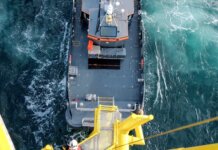UL has released Windographer 5, a re-engineered version of its software for analyzing, visualizing and validating wind resource data from meteorological towers and remote sensing systems.
Windographer 5 imports data from almost any format used in the wind power industry, allowing for rapid quality control and statistical analyses – including long-term adjustment and the functionality to export data to any wind flow model. Additionally, Windographer 5 helps project developers gain productivity and performance with more comprehensive views and comparisons of their datasets.
New features in version 5 of Windographer include:
- Analyze and manage multiple datasets together. Users can now build a single workbook with all related datasets rather than toggle between one dataset at a time.
- View multiple display windows simultaneously. Users can monitor multiple visualization modules together while making modifications.
- Undo modifications to correct mistakes. If a mistake is made, such as deleting the wrong data or executing the wrong flag rule, a multi-level undo system allows users to restore their data, even days or months afterwards.
- Manage larger datasets. Now a 64-bit application, Windographer 5 handles much larger quantities of data.
- Import high-frequency data. Windographer 5 can read one-second data and even smaller time steps.
Windographer 5 will only be available via subscription, which means users will always have access to the latest version of the software and the ability to continuously integrate the newest technology into their workflow.
“Accelerated growth in the wind industry, combined with larger wind farms, means that project developers are working with more and bigger datasets to understand the wind resource in a wind farm’s early planning stages,” says Tom Lambert, product manager at UL and creator of Windographer.
“This re-engineered platform optimizes the user experience and provides a foundation from which Windographer can grow into an even more powerful and flexible solution for analysis of wind and solar resource data,” he adds.




